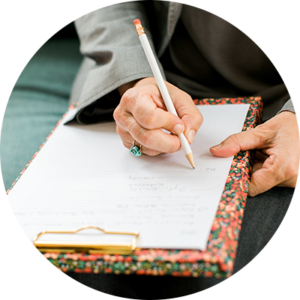In this video I share:
- Discussing the stage setup with the meeting organizer.
- How to position your podium and microphone. Don’t block your connection with your audience.
- How to move within your space to help your audience feel connected
Adapted transcript of video:
Generally speaking, you have a lot more control over the way the stage or the front of the room is set up than you might think. That's a conversation that you should definitely have with the meeting organizer. Ask them, can I set the room up anyway that I want? Or, if you don't have a lot of time, you might say, please tell me how the room will be set up. Is there a podium? Can I have a lavaliere instead of a microphone to hold? Or, will the microphone be fixed to the podium?
Sometimes you don't have a choice, but often times if you tell them early enough, they're happy to set up something else, even if it's just that most people are going to speak into a fixed microphone, and you can get a handheld. When it comes to the podium, what I recommend is, turn it sideways, set your notes on it. Ask for a handheld, so that you can move out of the way, the separation between you and your audience. Remember, captivating, inspiring presenting happens, and engagement happens when there's connection and rapport. You don't want anything blocking that connection. Move the podium to the side. You can use it to put your notes there. Feel free to go back and look at those notes, and then come back to your audience, square on.
Let's talk about the use of space, or the moving within the space. This also, moving the podium out of the way or choosing not to use one, gives you the opportunity to move to different sections. This is a way to show, especially if you have a wide room, or it goes way up into far corners, it's a way of showing them that you recognize that they're there. You might move over to one side and share one of the points, share a story. Then, come back to the center, talk with them. Then you can, again … Don't race from side to side. It's about recognizing and acknowledging that there are other parts of the room.
If you've got a really large room, and we're moving into gestures here, one of the ways that you can help feel connected, even if you've got a room of 1,000 people, is you can point or more, is to just point your eyes and maybe even move your hand in the direction. It might be when you're sharing an example. You're saying something like, “So some of you might have experienced…” It's a way of just letting them know, yeah, I'm thinking about you too. Or, you can ask the question, “Hey, you know what? Some of you are way back there in the corner, I wonder, can you hear me okay?” That's a way of acknowledging. Movement can help them know that you see them, and that they're there.



